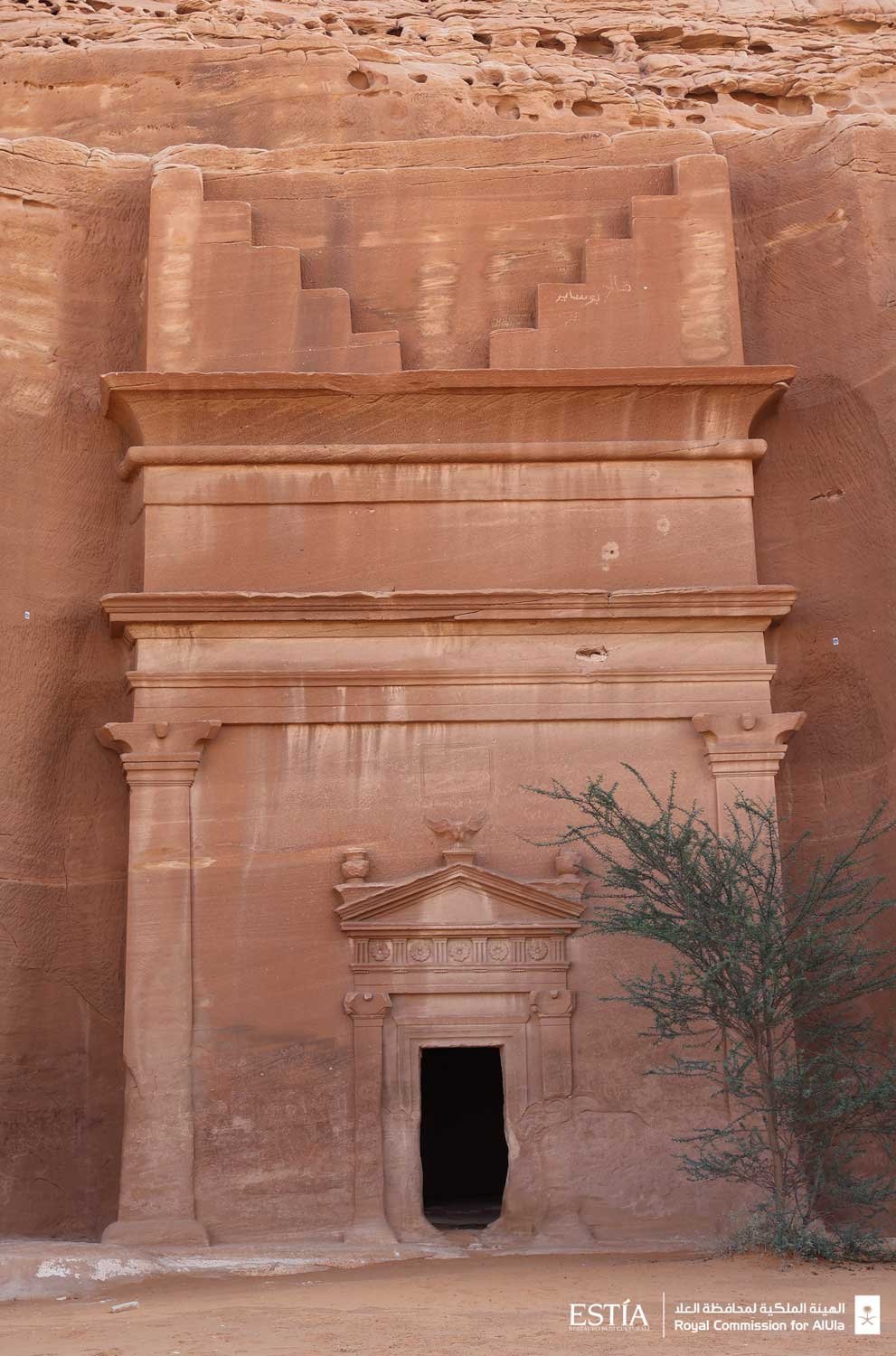
Tomb IGN21 is located in the southern sector of the Jabal Banat necropolis. The facade is less set back compared to the adjacent tombs, indicating it might be part of a unified design with tomb IGN22. A rock-cut passageway runs along the top of the facade, ending at tomb IGN20.1 and continuing to the access staircase near tomb IGN31. This pathway was likely carved after the construction of tomb IGN21, as it cuts through the summit portion of the upper cleaning trench.
The facade of tomb IGN21 is of the Hegra type, featuring two half-crowsteps on a plain background, followed by an Egyptian entablature consisting of a cornice and architrave, and a plain attic. Below, there is an Ionic entablature with a cornice, plain frieze, and double-register architrave, supported by two corner pilasters with Nabataean Corinthian capitals. The entrance is surmounted by a triangular pediment with a plain tympanum and three acroteria: a central one depicting an eagle and two lateral ones depicting vases.
The entrance to the tomb is at ground level, leading to a quadrangular burial chamber. Inside, there are four burial cells, one burial niche, and a pit tomb, distributed as follows: the first cell on the right wall, the second on the wall to the left of the entrance, the third on the left wall, and the niche on the right of the back wall. The pit tomb is positioned on the floor corresponding to the burial cell on the left of the entrance. The cells have a double level along the longer sides, likely used for closure. The underside of the entrance features holes likely used for door attachment.

Les tombeaux nabatéens de Hegra vol. II Nehmé L. Académie des inscriptions et belles-lettres Paris 2015 pp.51-53
The Nabataean Tomb Inscriptions of Mada’In Salih Healey J.F. Oxford University Press Oxford 1993 p.110
“This is the tomb which Arus son of Farwan made for himself and for Farwan his father the prefect and for Qaynu his wife and for Hatibat and Hamilat their daughters and the children of the same Hatibat and Hamilat and for anyone who produces in his hand a deed of entitlement from this same Arus or Hatibat or Hamilat his sisters daughters of Farwan the prefect to the effect that he may be buried in this tomb or may bury (in it) whoever he wishes by virtue of the deed of entitlement which is in his hand in accordance with what is in this document or by hereditary title. In the month of Nisan the thirty-sixth year of Haretat King of the Nabataeans lover of his people. Aftah son of ‘Abd’obodat and Wahbu son of Afsa and Huru the masons made it.”